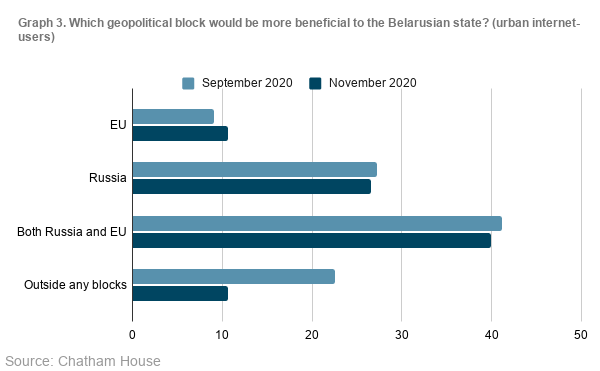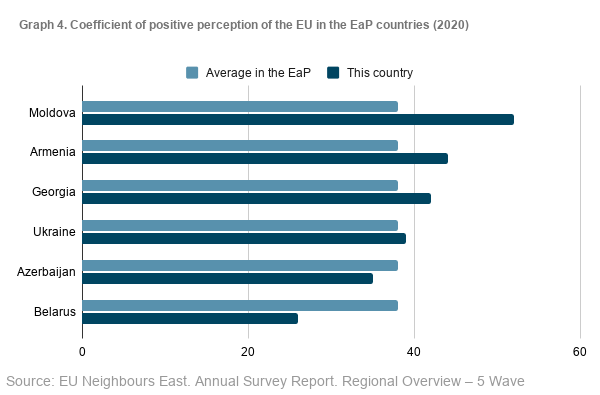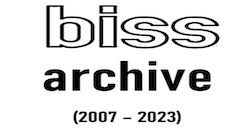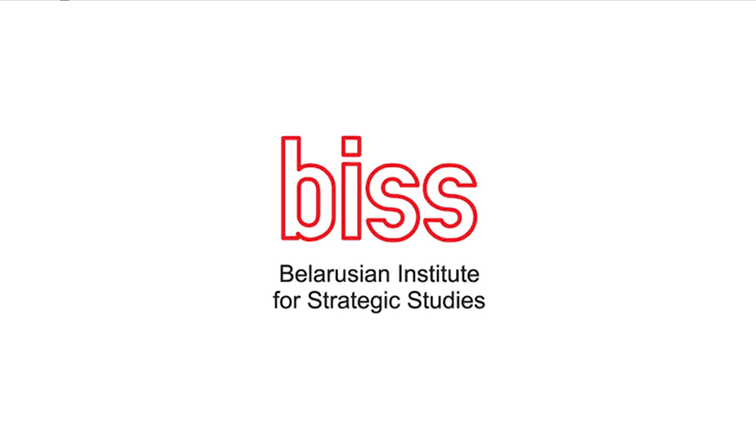Will Belarusians’ russophilism protect them from the Kremlin’s aggression?
According to a long celebrated paradigm of political transformations in Central and Eastern Europe, democratization correlates with the growth of pro-Western orientation and decline of pro-Russian attitudes. The Kremlin, in its turn, has accustomed to perceive any ‘colour revolution’ (non-violent mass uprising against an autocracy) as an essentially anti-Russian phenomenon.
The uprising of Belarusians in 2020 has apparently broken the paradigm. The Belarusians are still more pro-Russian than pro-Western, especially in terms of cultural and axiological orientation. At the same time, their democratic commitment is very clear: the central demand is free and fair elections, division of powers, and the rule of law.
In response to the protests in Belarus, the Kremlin has so far followed the tactic of temporarily supporting the Lukashenka regime coupled with pushing for constitutional reform within a year or two. In doing so, it counts on growing a strong pro-Russian political force in Belarus, which will either exercise power within a new authoritarian format or at least compete with others within a semi-democratic format. Of course, the first scenario is more preferable than the second one, but the question is: What steps is the Kremlin ready to take to pursue the most preferable scenario? This question is accompanied by another: In what circumstances is the Kremlin likely to adopt an ‘emergency scenario’: proxy war, fomenting separatist tendencies, attempts at annexation etc.?
In the article, it will be argued that, however reluctant to Belarus’s democratization the Kremlin may be, risks of ‘emergency scenarios’ are low. Paradoxical as it may sound, one of the deterrents is the Belarusians’ ‘russophilism’: coupled with some other factors it is likely to discourage the Kremlin from taking too aggressive steps towards the changing Belarus.
How russophilic are Belarusians?
Over the last two decades, there have been fluctuations in the Belarusians’ sympathy toward Russia, but pro-Russian attitudes have rarely dropped below 50% as well as rarely have they been weaker than pro-EU attitudes - see Graph 1 and 2.


The two sets of data were obtained by different sociological agencies and questions on geopolitical issues were framed differently, so we cannot take them as indices of exactly the same trend. However, in order to assess the level of sympathy towards Russia as compared to the EU the two data sets are quite informative.
One cannot but notice that since at least the beginning of 2018, there has been a slow but almost continuous decline in the number of supporters of a ‘Union with Russia’ and slight increase in supporters of a hypothetical integration with the European Union. However, the change in Russia vs EU sympathies unlikely reflects geo-cultural changes. A special study3 of motivation, conducted by the Belarusian Analytical Workroom (BAW) in August 2019, revealed that among the supporters of the pro-Russian option, axiological and cultural motivation dominates, whereas among those of the pro-European option—utilitarian one. When asked why they support integration with Russia, ‘Russophiles’ most often cited common values, ‘Russians are close to us’, common language, common history. Those of the pro-EU persuasion cited in the first place visa-free travel, opportunities for work/study, living standards, economic growth, higher incomes.4
The anti-authoritarian uprising in 2020 contributed to some shifts in cultural and political perceptions among Belarusians. There are, for example, reasons to think that many Belarusians changed their attitude to white-red-white flag and Pahonya coat of arms.5 An internet survey conducted in September and November 2020 among the urban population revealed that around 35% are in favour of these symbols.6 Before the protests broke out, the situation had been different7:
-
According to a 2009 national survey,8 7.7% were in favour of these symbols.
-
According to a 2018 national survey,9 13.2% were in favour of them.
-
According to a May 2020 survey of urban internet users,10 23% were in favour of them.
In interpreting these data, we have to allow for the probability that the omission of rural inhabitants and internet non-users somewhat skewed the result towards more supporters of white-red-white flag and Pahonya. But the difference between the May 2020 results (23%) and the September/November 2020 results (ca 35%), both obtained by the same method, indicates that the omission of rurals and internet non-users was not the principal factor. The presidential campaign in 2020 and post-electoral events have had a significant impact on the perception of the symbols in question.
The campaign and post-electoral protests had little if any impact on the Belarusians’ geopolitical sympathies, however. Let us look at Graph 3.

It is characteristic of Belarusians to seek conciliatory options (both X and Y) if available, regardless of how realistic they are. Since the Chatham House researcher provided the option ‘both Russia and EU’, as many as 40% chose it. Let us, however, notice that among those whose geopolitical preferences are determined the percentage of ‘Russophiles’ is more than twice as high as the percentage of pro-Europeans. In other words, the anti-authoritarian uprising has not broken the Russophilic/eurosceptic mood in the Belarusian society.
How unpopular the EU is among Belarusians becomes especially striking when we compare the perception of the EU in Belarus to that in other Eastern Partnership countries, see Graph 4.

The coefficient of positive perception (CPP) was calculated in the following way:
CPP = (percentage of those positively perceiving the EU) – (percentage of those negatively perceiving the EU)
Those perceiving the EU neutrally were disregarded.
Belarusians’ euroscepticism and russophilism by no means amount to their indifference to their country’s independence. In December 2019, the Institute of Sociology of the Belarusian Academy of Science estimated that the number of Belarusians supporting the idea of becoming a part of the Russian Federation was just 7.7%.12 The data of non-government agencies are within this range.13 The abovementioned September 2020 survey by Chatham House confirmed this trend: only 4.5% of the urban internet users would welcome joining the Russian Federation (‘Belarus is governed by Russia’). The vast majority of 75% would opt for an economic cooperation with Russia without any political integration.
To sum up, the Kremlin currently is facing the Belarusian society that largely is:
-
fed up with autocracy and ripe to democracy;
-
Eurosceptic and Russophilic;
-
committed to its country’s independence.
Let us now have a look at how the Russian society perceives Russia-Belarus relations and consider what factors are likely to impact the Kremlin’s policy towards Belarus.
Russians’ attitudes and structural preconditions
Surveys by the state-run Russian Public Opinion Research Centre (VTsIOM) show that a relatively small portion of the Russian population supports the idea of incorporating Belarus into the Russian Federation. Both in January 2019 and August 2020, only 17% of respondents chose the option ‘Belarus should become one or several constituent subjects of the Russian Federation’. The fact that the latter survey took place when the anti-Lukashenka protests where the most vehement apparently had no impact on the Russians’ approach to this issue.
Moreover, the option ‘There is no need for any unification, just good neighbourly relations between the two countries’ turned out most popular: 48% at the beginning of 2019 and 43% in August 2020 chose it. The rest opted for a Union State ‘on an equal basis’—see table 1.
Table 1. What would you like to see the Russian-Belarusian Union State? (closed-ended question, one answer, % of all respondents)
|
|
2019 January |
2020 August |
|
Unification of two states into a single state on an equal basis |
18 |
22 |
|
Belarus should become one or several constituent subjects of the Russian Federation |
17 |
17 |
|
There is no need for any unification: just good neighbourly relations with Belarus like with any other state |
48 |
43 |
|
Russia should become one or several constituent subjects of Belarus |
2 |
1 |
|
No answer |
15 |
17 |
Source: VTSIOM
As we see the societal support for a hypothetical annexation of Belarus is very weak. It would require enormous propagandist efforts to change public opinion, and there is no guarantee that it would succeed.
There are also structural factors that can discourage the Kremlin from too aggressive policies toward Belarus. As it is, Russia is an incredibly large area: 17 million km2. Controlling and managing such a huge territory is very costly. Delegating management and controlling functions to regions—a measure that could reduce the costs of a centralized management—carries real risks. The 1990s showed how risky it is.
On the territory of Russia, there are around 190 nationalities and ethnic groups, speaking in around 100 languages and dialects and espousing different religions and beliefs. In addition, Russia is constantly exposed to the ‘resource curse’. The presence of huge natural resources does not stimulate innovative thinking and the spirit of cooperation, but pushes to a fierce struggle for access to resources.
Huge size, enormous diversity, high liability to oligarchization and the deficit of an ethos of cooperation are all factors of disintegration risk. In the 2020 Fragility Index composed by the Fund for Peace, Russia received 72.6 points out of 120. This means that it is relatively fragile (vulnerable to disintegration)—more fragile than Georgia 71.2), Ukraine (69.1), Moldova (66.1) or Armenia (64.2).
Table 2. The fragility index of Russia as compared to selected countries (2020)
|
Country |
Total Index (maximum: 120) |
Rank (of 178 countries) |
|
USA |
38.3 |
149th |
|
Poland |
41.0 |
145th |
|
Armenia |
64.2 |
108th |
|
Belarus |
65.8 |
103rd |
|
Moldova |
66.1 |
100th |
|
Georgia |
71.2 |
80th |
|
Ukraine |
69.0 |
92nd |
|
Russia |
72.6 |
76th |
|
Kyrgyzstan |
73.9 |
73rd |
|
Venezuela |
91.2 |
28th |
Source: Fragile States Index powered by the Fund for Peace14
Bertelsmann Index seems a bit more optimistic about Russia: in 2020 it rated the ‘stateness’15 of Russia with 8 points out of 10, but we have to take into account that this index includes only developing countries; developed ones, like the USA or Great Britain, are not rated here. Still, Russia lags behind Belarus or Armenia (their stateness was rated with 8.8), but surpasses Ukraine (its stateness—7.5).16
To sum up, there are at least two societal and structural factors that are likely to be relevant to the Kremlin’s policy towards Belarus:
-
The idea of annexation of Belarus is very unpopular with the Russian society.
-
Russia is already vulnerable to disintegration because of (temporarily frozen) separatist tendencies.
Can we count on the Kremlin’s (bounded) rationality?
Let us now lay out the two scenarios that most likely are considered by the Kremlin’s policy-makers:
-
Best-case scenario:
[protests gradually subside]
⇩
[constitutional reform is made] & [a pro-Russian political force emerges]
⇩
[the pro-Russian force becomes the most powerful]
⇩
[the pro-Russian force establishes its own authoritarian rule, either by changing constitution or by using constitutional loopholes]
-
Plan ‘B’:
[protests gradually subside]
⇩
[constitutional reform is made] & [a pro-Russian political force emerges]
⇩
[the pro-Russian force becomes one of major political forces]
⇩
[the pro-Russian force competes with others within a semi-democratic framework]
Let us bring together the factors established above that will most likely affect the Kremlin’s policy-makers:
-
Belarusians are fed up with autocracy and ripe to democracy.
-
Belarusians are generally Eurosceptic and Russophilic.
-
Belarusians are committed to their country’s independence.
-
The idea of annexation of Belarus is very unpopular with the Russian society.
-
Russia is already vulnerable to disintegration because of (temporarily frozen) separatist tendencies and the tendency to oligarchization.
Though not analysed in detail, an economic factor can be added to the list as self-evident:
-
Belarus is among five most important trade partners of Russia, in terms of both imports and exports.17
The Kremlin is likely to be tempted to establish a predictable pro-Russian authoritarian regime (in place of Lukashenka’s, which has grown highly unpredictable). Factor (4) may, at first glance, be friendly to such a scenario. However, much depends on how serious is factor (3). Moscow strategists may assume that the anti-authoritarian uprising is just an ephemeral caprice, a byproduct of economic stagnation, the regime’s reaction to CoViD19 and being tired of Lukashenka’s quarter-of-century rule. A fresh figure, however authoritarian, can find acceptance among the majority of Belarusians.
This way of thinking is likely to guide the Kremlin’s policies in the near future. It may happen, however, that the Belarusian society repeatedly confirms its commitment to democracy, so the Kremlin’s attempts at establishing a predictable pro-Russian autocracy might drive Belarusians away from Russia (factor (4)). Given the choice (Ch):
(Ch) Either to push for a pro-Russian autocracy and put at risk Belarusian’s russophilia and euroscepticism, or to accede to democratization and avoid (or reduce) this risk.
it seems rational to go for the second part of disjunction.
Other factors—(5), (6), (7) and (8)—contribute to this option (the second part of (Ch)). Additionally, they all reduce the risk of ‘emergency scenarios’ (proxy war, fomenting separatist tendencies etc.). Such scenarios would be left as ‘last resort’ and launched only if Belarus makes a U-turn in geopolitical integration (e.g. joining the EU and NATO) and/or adopts harsh nationalistic policies and/or sends troops to the Donbas to fight on Ukraine’s side. Given the current mood in the Belarusian society and likely configurations of political forces in Belarus after Lukashenka’s resignation, there are weak pre-conditions for ‘emergency scenarios’.
The above analysis largely rested on the assumption of rationality of the Kremlin’s policy-makers. Like in contemporary economics, we have to allow for biases that may accompany political decision making. In part, we can reasonably expect that ‘availability heuristics’ would affect assessing factor (3). The Kremlin’s strategists are unlikely to analyse in detail value transformations in Belarus; rather, they will rely on instantly available data such as the current dynamics of mass protests.
However ‘bounded’ the rationality of the Russian political elites may be, it is very unlikely that they would overlook or underestimate a majority of the factors listed in (3)—(8). Thence, the risk of ‘emergency scenarios’ is low. And Belarusians’ ‘russophilism’ turns out an important deterrent.
1 Internet link: http://www.iiseps.org/?p=114
2 Internet link: https://belsat.eu/ru/news/obvalnoe-padenie-chislo-storonnikov-soyuza-s-rossiej-snizilos-na-tret/?fbclid=IwAR3mqKVi2wyLt4Yzhm4TcF9kKz3mXgfFCurufY3TVvzCOeg6-LeSW-8M6XU
and https://www.kommersant.ru/doc/4583283
3 It consisted of two components: focus groups and a nation-wide representative survey.
4 The results of the study have not been published, but they were presented in September 2020 in Vilnius during the Congress of Belarusian Studies.
5 In 1991—1995 official symbols of the Belarusian state. In 1995, Lukashenka won a referendum by which these symbols were changed into Soviet-style red-green flag and red-star-and-wheat emblem. Since then, white-red-white flag and Pahonya emblem have served as symbols of democratic opposition or/and as an expression of non-Soviet national identity.
6 Internet link: https://www.chathamhouse.org/2020/10/what-belarusians-think-about-their-countrys-crisis. Surveyed a total of 899 respondents between 22 and 28 September 2020. The sample’s composition corresponds to the general structure of Belarus’s urban population in terms of gender, age, and the size of respondents’ town of residence. The poll was conducted using the Computer Assisted Web Interview (CAWI) method, which in practice means that it was limited to internet users.
7 For closer analysis, one should take into account the differences in wording and the fact that surveys in 2020, both in May and September/November, were conducted via the internet. However, underrepresentation of rural population and internet non-users can make it problematic only comparing 2020 results with those in 2018 and 2009. It is relatively unproblematic to compare the results of May 2020 with the results of September and November 2020.
8 A national representative survey conducted by NOVAK agency in 2009.
9 A national representative survey conducted by BAW in 2018.
10 A survey among urban internet-users conducted by Satio in May 2020.
11 Internet link: https://www.chathamhouse.org/2020/10/what-belarusians-think-about-their-countrys-crisis
12 https://afn.by/news/i/269821
13 Cf. https://naviny.belsat.eu/ru/news/andrei-vardomatskii-za-vhozhdeniye-v-sostav-rossii-5-7-respondentov-v-belarusi/
14 Internet link: https://fragilestatesindex.org/data/
15 Clarity about the entity’s existence as a state with adequately established and differentiated power structures.
16 Internet link: https://atlas.bti-project.org/
17 Source: Federal customs service, https://eng.customs.gov.ru/
Source: Varta. Belarus Security Magazine, 2020.


